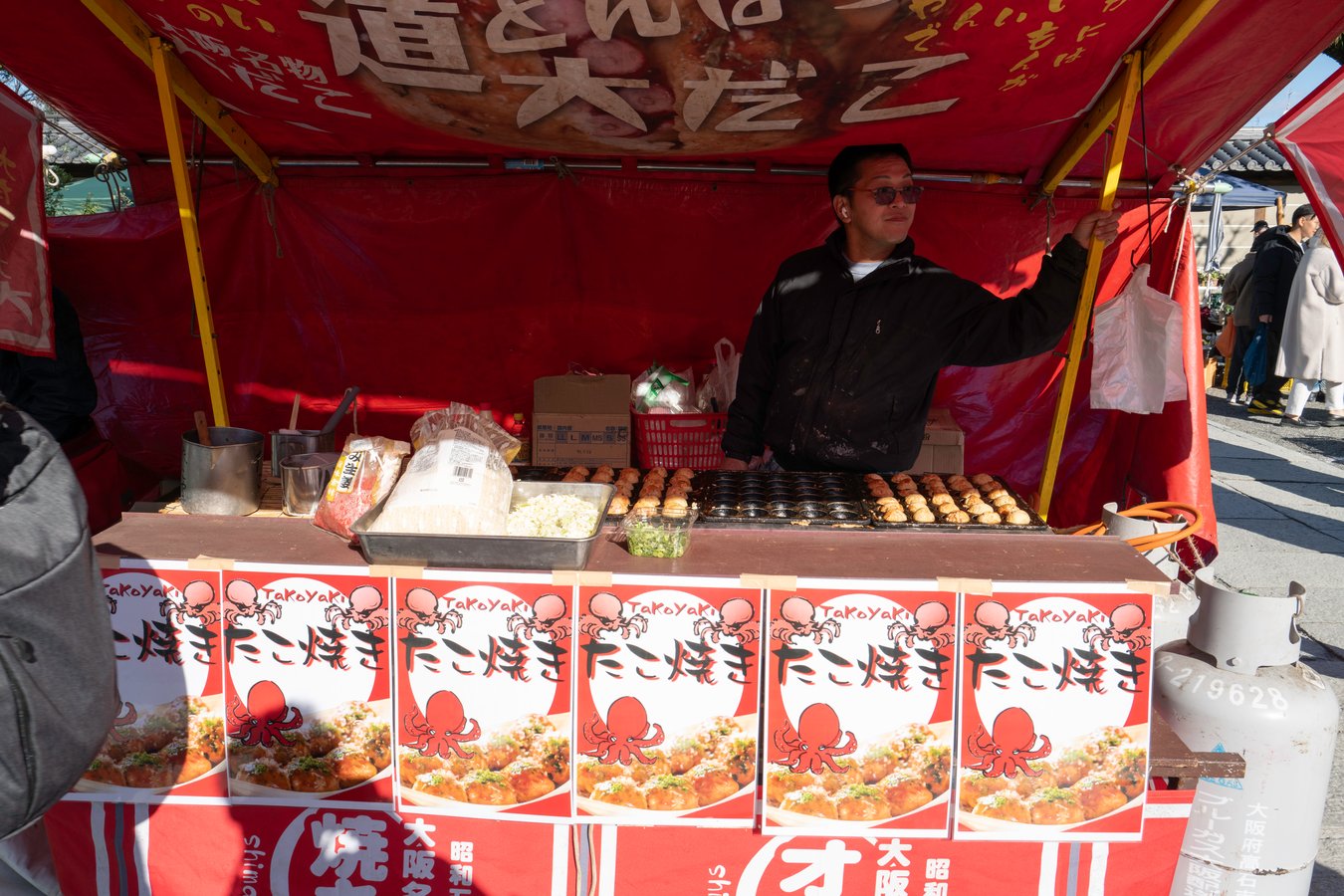Origin and History of Takoyaki
Takoyaki, which translates to “octopus grilled,” likely originated in Osaka around 1935. It was created by street vendor Tomekichi Endo and evolved from earlier snacks like choboyaki and akashiyaki. After World War II, serving it with sauce and mayonnaise became the norm. The original shop, Aizuya, still operates in Osaka, offering a traditional version without these toppings.
Ingredients and Preparation
Takoyaki is made from a batter of wheat flour, mixed with octopus, tempura scraps (tenkasu), pickled ginger (beni shoga), and green onions (negi). It is cooked in a special pan with hemispherical molds, where the batter is flipped into balls using skewers. This cooking process creates a crispy exterior and a soft interior, and watching it being prepared is part of the fun at street stalls.
Serving and Cultural Significance
Takoyaki is typically served with takoyaki sauce, mayonnaise, green laver (aonori), and bonito flakes (katsuobushi). It is a beloved snack often paired with beer in izakayas and is a staple at Japanese festivals. Its cultural importance is reflected in media, such as the manga Magical Taruruto and the children’s book Takoyaki Mantoman.
Global Popularity
Takoyaki’s popularity has spread worldwide, with regional variations adding ingredients like cheese or bacon. While these adaptations cater to local tastes, they still honor the snack’s traditional roots and its association with Osaka’s food culture.



